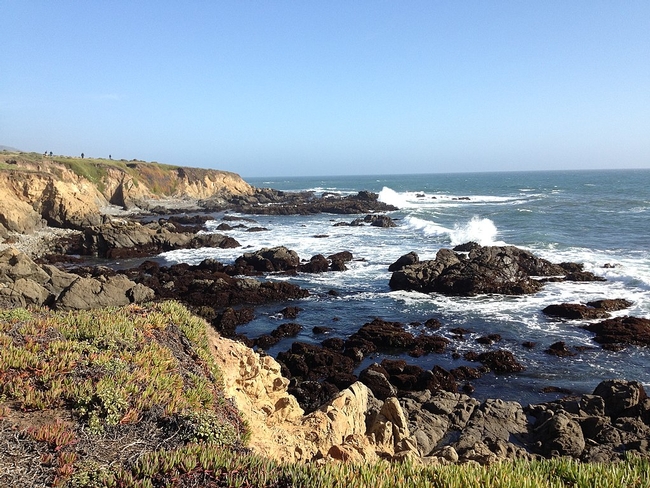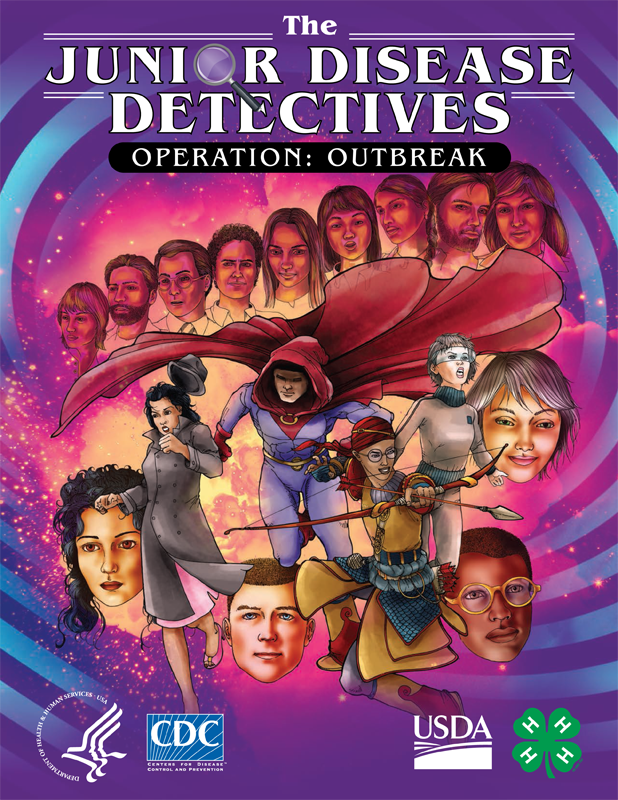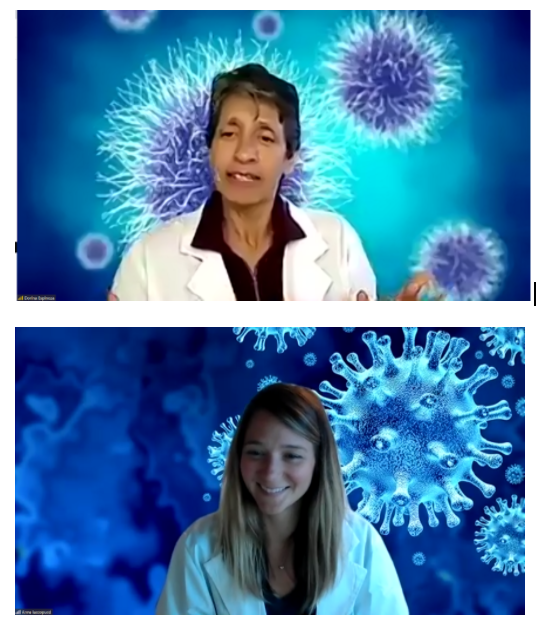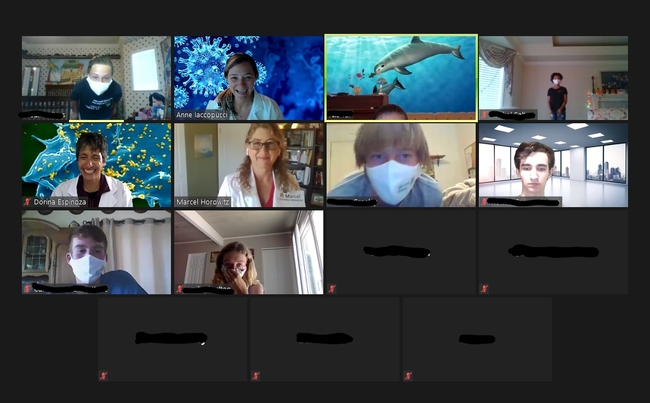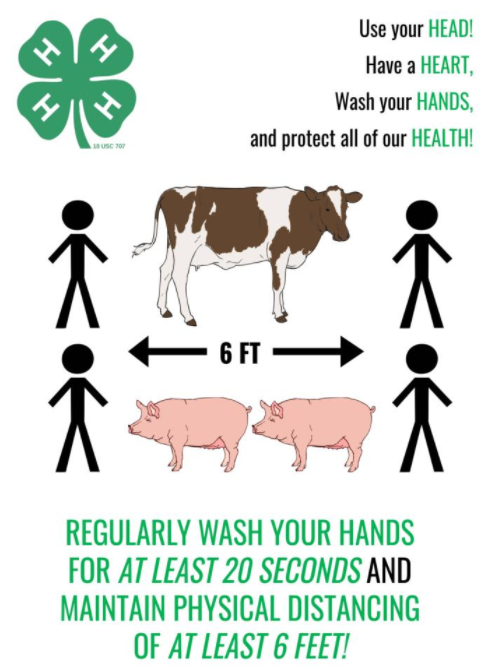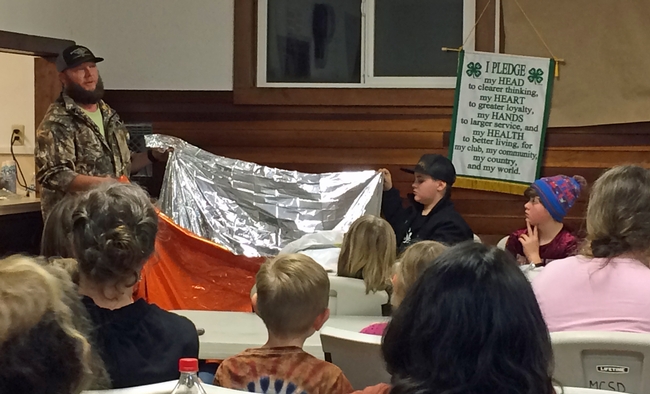Posts Tagged: Dorina Espinoza
4-H adds lessons on mindfulness to promote healthy living

Mindfulness is the practice of paying attention in the present moment and accepting it without judgement. Benefits include reduced stress, better concentration, less depression and anxiety and a stronger immune system.
Even before the pandemic, the UC Cooperative Extension 4-H Healthy Living leadership team – Anne Iaccopucci, UCCE Healthy Living academic coordinator; Dorina Espinoza, youth, families and communities (YFC) advisor in Humboldt and Del Norte counties; and Marcel Horowitz, UCCE healthy youth, families and communities advisor in Yolo County – recognized that youth appeared to be struggling with anxiety and emotional challenges. An examination of published research showed that youth programs were successfully using mindfulness practices to help young people who had developmental challenges or behavioral disturbances.
With mindfulness gaining greater mainstream interest, Iaccopucci joined with YFC advisor Katherine Soule, and University of New Hampshire, Durham, youth and family resiliency state specialist Kendra Lewis to investigate the use of mindfulness for growth and development in people without serious conditions, but struggling with challenges of modern life.
“The 4-H Healthy Living team wanted to make sure we were addressing the social-emotional development of young people, so we investigated how we can integrate mindfulness into our programs,” Iaccopucci said.
Mindfulness retreat
The team designed an annual weekend UC 4-H Mindfulness Retreat for youth and adults to build skills in mindfulness, stress management, relationship building and community connection. Three-day retreats were held over four consecutive years in Cambria, a peaceful beach community on California's Central Coast.
Lessons in yoga, art and nature exploration were combined with quiet reflection, socialization and emotional-regulation training led by experts with extensive knowledge in those mindfulness methods. “Hangout time” was electronics-free; participants were encouraged to spend time getting to know one another or practicing self-reflection.
A survey completed by participants at the end of the retreats helped leaders improve the activity year-to-year and gauge the program's success. Both youths and adults said they were satisfied with their experiences at the retreat, wanted to participate again and would recommend the experience to others, the retreat team reported in the August 2020 issue of the Journal of Extension.
As part of the completion survey, the youths and adults were asked to provide examples of how their new skills and knowledge in mindfulness can be applied in their daily lives, how it can be applied in 4-H, what they liked best and what they would change.
One youth mentioned, “Giving skills back to my 4-H club, or when I am stressed, going back to what I learned.” An adult said, “More present for my family. I will be more mindful in my daily life! Take at least 6 deep breaths in my daily life or day to day.”
One youth said, “I can pass my new knowledge down to the youth in my county or across the state.”
Another youth wrote that the best part was, “Learning how to stay calm and having fun.”
To read the full report on the retreats, see Engaging Teens and Adults in Mindfulness: The University of California 4-H Mindfulness Retreat.
Mindfulness curricula
Hosting a mindfulness retreat is a vast undertaking that may not be practical for individual 4-H clubs or other youth groups. To extend the benefits of mindfulness to more youth across California and the nation, the Healthy Living Team developed curricula that can be used by 4-H clubs and other youth-serving organizations – such as Girl Scouts, Boy Scouts, Boys' and Girls' Clubs, etc.
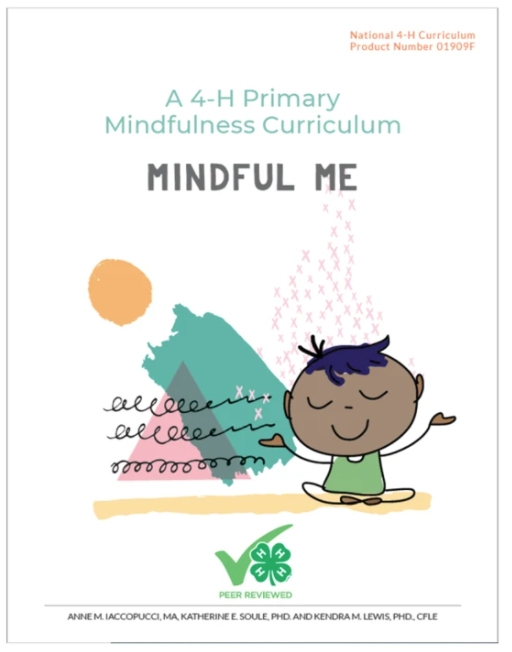
For example, one lesson focuses on naming and describing feelings. The lesson explains that feelings – such as happy and sad – visit for a time like houseguests, and centers on a book called “Visiting Feelings” by Lauren Rubenstein. The author suggests that feelings should be viewed with “wide open eyes.”
“Is it bright like the sun, dark like the rain, or is it a look you can't even explain?” says the text. “If you listen to what your body can say, you'll find that your feelings are really OK.”
Each lesson includes a connected activity. For naming and describing feelings, the children can choose a feeling to explore, write it down and draw what the feeling looks like – a prickly plant, a bouncy ball, a present?
The curriculum is available on the Shop4-H.org website for $39.95. Videos were created to accompany the curriculum and are available on the eXtension website with the purchase of the curriculum. (Visit https://campus.extension.org/enrol/index.php?id=1839, create and account and use the enrollment code California to view the videos.)
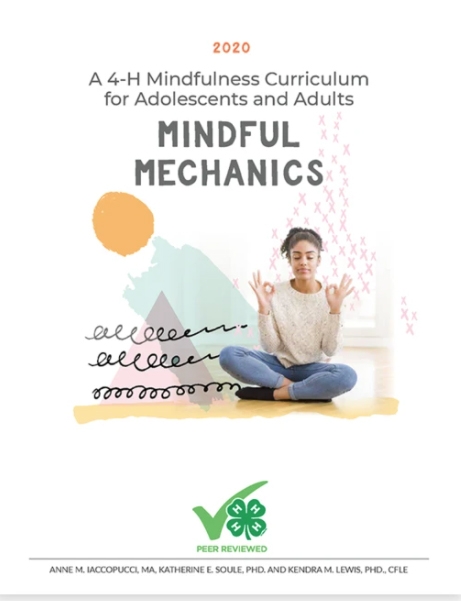
The curriculum is available on the Shop4-H.org website for $39.95.
A three-page 4-H Mindfulness Project guide is available for free download. The guide is designed for 4-H Clubs, but it is useful for any teacher or leader to share the benefits of mindfulness. Some suggested activities include creating a portfolio of favorite places that help the participants feel relaxed, start a gratitude journal to document the things they are grateful for, explore food using all five senses or host a self-reflective nature walk in the local community.
The publication also suggests how youth can develop leadership skills related to the mindfulness project by becoming a Healthy Living Officer, a junior or teen leader for a mindfulness project and plan and prepare a mindfulness exercise for a community club meeting.
To learn more about the 4-H Youth Development program in local communities across California, see http://4h.ucanr.edu/
4-H youth become 'Disease Detectives' in statewide epidemiology project
What do 4-Hers do during a pandemic? California 4-H youth members decided to learn about disease outbreaks and transmission, public health investigations, personal practices to stay healthy, and much more.
With the emergence of the coronavirus, 4-H in-person meetings had to be canceled, along with schools, sports and other youth development programs. Emerging research shows this gap of in-person socializing, disruption to routines, fear of the virus, and the loss of a sense of personal autonomy has led to an increase in social, emotional and mental health issues for teens. Over half of teens in a National 4-H Council/ Harris Poll stated that the pandemic has increased their feelings of loneliness, and 7 in 10 teens report struggling with their mental health.
Additionally, the team witnessed that Californians were navigating confusing information about the best way to reduce the spread of the disease, with much misinformation being circulated. So the University of California 4-H Healthy Living Team decided to address these issues the best way they knew how, through education.
Anne Iaccopucci, California 4-H Healthy Living coordinator; Dorina Espinoza, UC Cooperative Extension youth, families and communities advisor in Humboldt and Del Norte counties; and Marcel Horowitz,UCCE healthy youth, families and communities advisor inYolo County, adapted the CDC/4-H Junior Disease Detective: Operation Outbreak project for remote instruction.
The project focused on concepts of epidemiology and included eight sessions covering public health professions, disease investigation, virus transmission, disease outbreaks, vaccines, immunity, prevention (such as how protective actions like handwashing and wearing masks reduce spread) and education. Project sessions were adapted to be as interactive as possible using virtual delivery.
Eighty-nine youth indicated an interest in participating, with more than 45 4-H members from 15 counties across the state enrolling and completing the Virtual UC 4-H Epidemiology Project. Project meeting materials were coordinated online at https://ucanr.edu/sites/DiseaseDetectives.
True to the 4-H experiential learning framework, and to address the research showing that teens are currently experiencing high levels of loneliness, the Project Leaders intentionally created a learning environment that included interactive, fun, challenging and social activities to foster a sense of connection. At the beginning of each project session, youth worked on team-building activities. For example, youth participated in a mapping activity where they “pinned” their desired vacation destination and attempted to guess each other's location with a selected prop as a hint. This activity culminated with a discussion on how we serve as potential vectors of disease transmission. Also, youth learned about the benefits of wearing face masks with an activity where youth were challenged to blow a rolled up tissue from one to six feet away without a mask and then while wearing a mask. Their giggles did not mask the direct learning of how well a mask can contain one's breath.
When youth were asked “What part of this project was fun and engaging?” several responded, “When we did the activities in breakout rooms,” and “The activities at the beginning of the meetings.” This indicates that this dedicated time for talking with peers was a motivator and benefit of continued participation.
To foster healthy youth, families and communities, this project contributed to the UC ANR Condition Change of improved health for all. Specifically, youth adopted healthy lifestyles and decision-making practices and changed attitudes toward, and gained knowledge about, healthy practices.
After completing the UC 4-H Epidemiology Project, youth reported that they were more likely to wash their hands before food preparation (78.1%), after sneezing or coughing (56.2%), and after shopping in a public space (87.5%). The majority (84.4%) of youth also reported that they were more likely to wear a face mask when out in public, compared to before the project. When youth were asked what they learned from the project, one youth stated, “I learned why masks work, I learned how hand sanitizer works, and I learned how I can help my community.”
Youth reported not only improved health behaviors for themselves, but also reported being leaders in the health of their communities. Many of the young participants (62.5%) reported that they can definitely help control the spread of diseases and 71.9% could envision themselves getting involved in their local community to help slow the spread of disease. Following project participation, over half of all participants picture themselves choosing a career in medicine, public health, veterinary sciences or epidemiology.
Participants of the UC 4-H Epidemiology Project have become advocates for health, with 75% reporting that they are discussing disease transmission and prevention with others. When asked what the best part of the project was, a participant stated, “The best part of the project was learning about how to protect myself and keep my family safe in these troubled times." Other youth stated that their favorite parts were “the interactive activities” and “making new friends.” Others responded to the question “What part of this project was fun and engaging?” with, “I enjoyed interacting with others and getting to collaborate on the final project,” and “discussing ideas with the group.” These indicate that learning reached beyond knowledge, skills, attitudes and behaviors and into youth development domains as well.
Interested in leading this project for youth 12 years and older in your community? Sixty leaders from throughout America have already been trained and 93% reported they would recommend it.
Contact Anne Iaccopucci at amiaccopucci@ucanr.edu for information on how to get started.
4-H learning model helps two lost children survive
The joyful reunion of two 4-H children, Leia and Caroline Carrico, with their parents after spending 44 hours lost in the Humboldt County wilderness in early March has raised awareness about the benefits to youth involved in the UC Cooperative Extension 4-H Youth Development Program.
Established more than 100 years ago, UC Cooperative Extension launched 4-H to teach children research-based agriculture and rural living skills. Over time, it has evolved dramatically, reaching children in urban centers, inner cities, suburbs as well as rural communities with leadership opportunities, life skills, nutrition education and other information to help them grow into resilient adults.
The Carrico children, ages 5 and 8, had participated in a 4-H outdoor training training program. They lived in a rural area and were well acquainted with the redwood forest surrounding their home. Recalling lessons they learned, the sisters stayed in place when they realized they were lost – a key survival skill, said Yana Valachovic, director of UC Cooperative Extension in Humboldt and Del Norte counties. There were more things they learned from 4-H project leader Justin Lehnert's teaching that helped them survive unscathed.
“Justin told them to leave signs. Searchers found granola bar wrappers and deep boot marks. They knew that they should shelter in a dry place,” Valachovic said. “They knew to keep positive and how to find safe drinking water without endangering themselves by drinking from a creek.”
The 4-H program in Humboldt County has been inundated with calls for a curriculum that can be used elsewhere to teach these valuable skills. The UC 4-H Youth Development advisor for Humboldt and Del Norte counties, Dorina Espinoza, is working with Lehnert to develop a project sheet so the survival skills used by the Carrico sisters can be made available in 4-H and other settings to young people throughout the U.S.
The sisters' odyssey and its happy conclusion shows the hoped-for result of the research-based 4-H learning model, Espinoza said.
“The sisters are smart girls,” Espinoza said “They attribute their application of survival skills to family camping trips, movies about people who get lost and 4-H adventures. 4-H reinforced new or existing skills. We know kids learn with multiple exposures. 4-H is a hands-on approach to learning that other settings don't offer.”
In 4-H, children choose “projects” they are interested in. The projects are led by adult volunteers from the community.
“What's different about 4-H is we have adult volunteers who develop partnerships with youth. They partner in learning, leadership and decision making,” Espinoza said. “That's a beautiful part of 4-H.”
Lehnert is a 4-H parent and volunteer who operates a business in Humboldt centered on enjoying the outdoors.
“Justin brings years of personal and professional experience, having completed a Wilderness First Responder Course of the National Outdoor Leadership School. He studied outdoor recreation at Feather River College and has been an outdoor recreation enthusiast for years,” Espinoza said. “We are so very grateful to Justin for sharing his expertise with our 4-H community.”
Californians can find UC Cooperative Extension 4-H projects near them at http://4h.ucanr.edu.
4-H Youth Development team wins national diversity award
UC 4-H Youth Development advisors Dorina Espinoza, Russell Hill, Fe Moncloa and Keith Nathaniel and 4-H associate director Shannon Horrillo have won the National Extension Diversity Award for systematically enhancing the intercultural competency of 4-H personnel and others in California. The National Extension Diversity Award was presented Sunday, Nov. 13, at the 129th Association of Public and Land-grant Universities Annual Meeting in Austin, Texas.
The award, given by USDA National Institute of Food and Agriculture (NIFA), Cooperative Extension System and the APLU, honors the team for developing and institutionalizing a professional development strategy to increase staff and academics' intercultural competence.
To support the development and well-being of California's culturally and ethnically diverse youth population, research indicates that building intercultural competence among youth development professionals is critical.
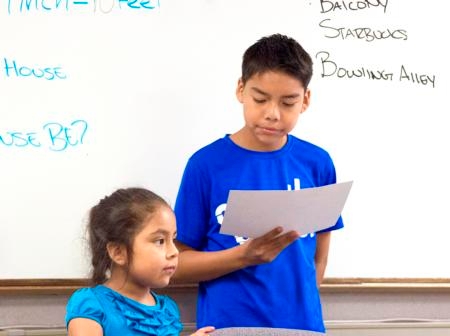
“We have been making changes to our programs to remove barriers and make 4-H more accessible. We are also testing new delivery models to expand 4-H's reach, particularly among Latino youth and families,” Horrillo said.
“This effort has been extremely successful and we are seeing the benefits in our membership,” said Horrillo. “The program's growth over the last year was significant, with a 16 percent increase in youth participation and a nearly 42 percent increase in Latino youth participation.”
“We asked Latino parents how we can help,” said Lupita Fabregas, assistant director for 4-H Diversity and Expansion. “Working parents suggested after school programs so they don't have to drive their kids to a different location.”
Through a pilot initiative in seven counties – Riverside, Orange, Kern, Santa Barbara, Monterey, Merced and Sonoma counties – UC ANR's 4-H Youth Development Program now offers in-school, after school and special interest clubs that explore subjects such as robotics. Children can join clubs that focus on projects for four to six weeks, rather than 4-H's year-long commitment. Bilingual and bicultural program representatives provide materials in English for the children and Spanish for parents. Although the activities are structured differently, they aim to teach Latino children science, leadership, civic engagement and other life skills taught through the traditional program.
The team of change agents applied the professional development strategy over three years, providing 176 hours of intercultural communication feedback sessions, learning communities and regional conferences to enhance the intercultural competence of 65 California 4-H personnel.

The UC ANR 4-H Youth Development Program has also assembled an advisory committee for 4-H multicultural and community engagement that includes Latino leaders Mary Lou de Leon Siantz, a professor at the Betty Irene Moore School of Nursing at UC Davis and director of the Center for Advancing Multicultural Perspectives on Science (CAMPOS); Steven Olmos, chief schools officer for Santa Clara County Office of Education; Albert Maldonado Jr., youth program manager for The California Endowment; and Juan P. Garcia, deputy director of the California Hispanic Chambers of Commerce.
UC ANR's action plan and resulting positive change provides a model for 4-H in other states to improve professional development and expand the program's reach. A summary of California's IDI professional development activities can be found in the National 4-H Latino Youth Outreach: Best Practices Toolkit, Professional Development.
